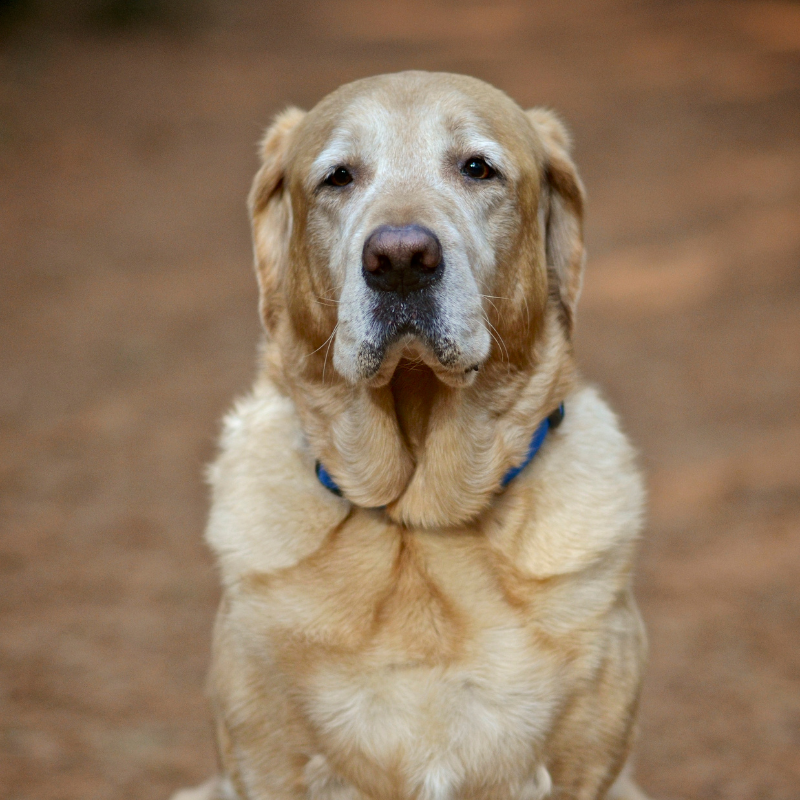
What is laryngeal paralysis in dogs?
If you have ever owned or been around a large breed older dog that has a rough-sounding pant, it may have laryngeal paralysis.
Laryngeal paralysis occurs when the folds (arytenoid cartilage) of the larynx stop opening correctly. The larynx is often referred to as the voice box, but more accurately it protects the airway to the trachea (“windpipe”). The muscles of the larynx help to close the larynx when we eat or drink and open the larynx when we are taking a deep breath.
Laryngeal paralysis occurs when these muscles stop working properly and compromise the larynx’s ability to open the laryngeal folds correctly. As a result, there is more turbulence or force in the airway when a dog is panting since the folds are not opening up all the way, which causes the rough sound some dogs have when panting.
What are the signs of Laryngeal Paralysis?
Laryngeal paralysis occurs gradually with the average patient being 10 years of age or older. Clinical signs tend to be panting more, tiring easily when exercising, rough or raspy breathing sounds, voice change, gasping for air, and respiratory distress. The Labrador Retriever is the most commonly affected breed, but any large breed dog can be affected. The Siberian Husky, Bull Terrier, Great Pyrenees, Dalmatian, and Bouvier des Flandres can have genetic early-onset laryngeal paralysis.
Laryngeal paralysis is the first clinical sign of a disease syndrome called Geriatric Onset Laryngeal Paralysis and Polyneuropathy. What this means is that laryngeal paralysis is a precursor to neurological signs that progress to the limbs and cause weakness and incoordination. It can also progress to the esophagus causing weakness and potential loss of normal function, which can lead to aspiration pneumonia. The good news is that Geriatric Onset Laryngeal Paralysis and Polyneuropathy tend to progress slowly, and most dogs live normal lifespans without neurological signs.
How is Laryngeal Paralysis diagnosed and treated?
 The only way to diagnose a dog with laryngeal paralysis is with a sedated exam where the airway can be observed while the patient is breathing. When a dog has laryngeal paralysis, your veterinarian will observe the arytenoid cartilage barely moving or not moving at all.
The only way to diagnose a dog with laryngeal paralysis is with a sedated exam where the airway can be observed while the patient is breathing. When a dog has laryngeal paralysis, your veterinarian will observe the arytenoid cartilage barely moving or not moving at all.
There are both surgical and conservative ways to manage laryngeal paralysis. With conservative management, you need to reduce the dog’s anxiety, if there is any, try to limit situations that would lead to panting, avoid the heat, switch to a harness to prevent pressure on the larynx, and potentially reduce exercise. The downside to conservative management is that a respiratory crisis can occur.
A respiratory crisis occurs when a dog is panting or tries to breathe deeply and can’t. This causes anxiety and continued attempts to get a deep breath of air, which causes the arytenoid cartilage to swell, which only obstructs the airway further. Eventually, the dog will not be able to get enough oxygen and will start to overheat. This is a medical emergency that will require a veterinarian to sedate the patient, intubate (put a tube in its throat) and start oxygen therapy while also cooling the patient. Despite intervention, some dogs do not recover from a respiratory crisis.
There are several different surgical options available, with the laryngeal tie-back option probably being the most common. With this procedure, one of the arytenoid cartilages is tied back with sutures to create a bigger opening in the trachea and allow better airflow. With surgical options, the most common complications are persistent cough, aspiration pneumonia and your dog will no longer be able to swim.
If your dog has laryngeal paralysis, the best thing to do is discuss it with your veterinarian and determine which treatment option is best.


